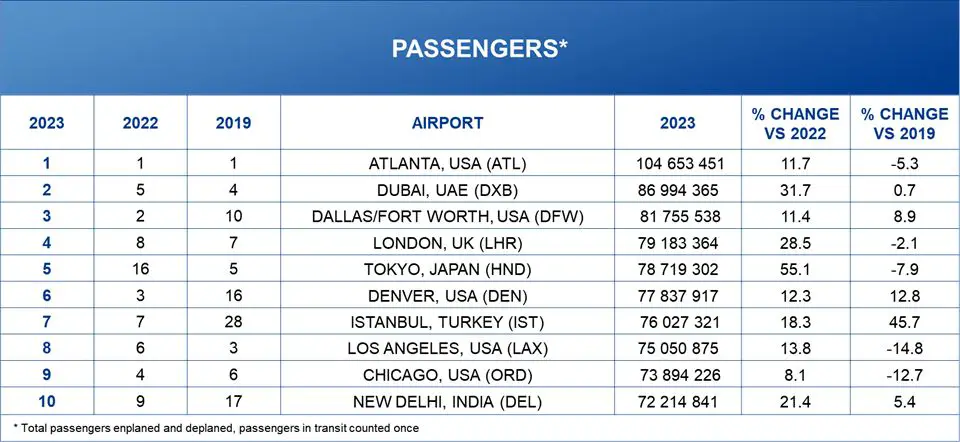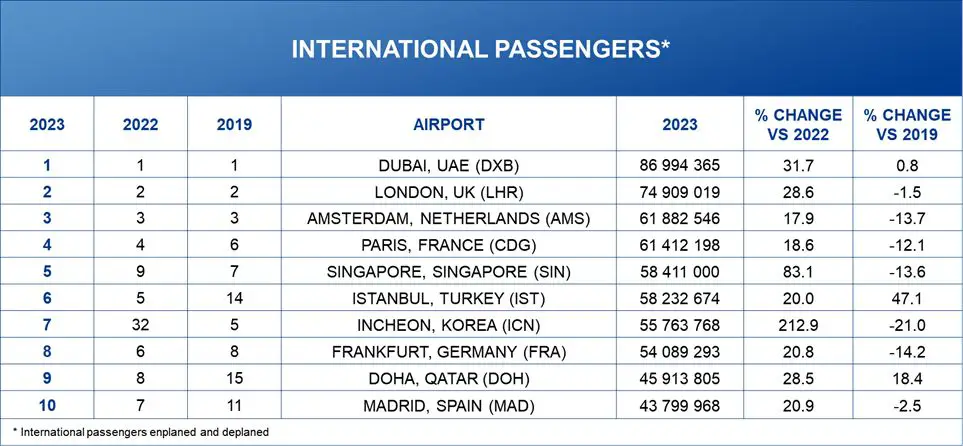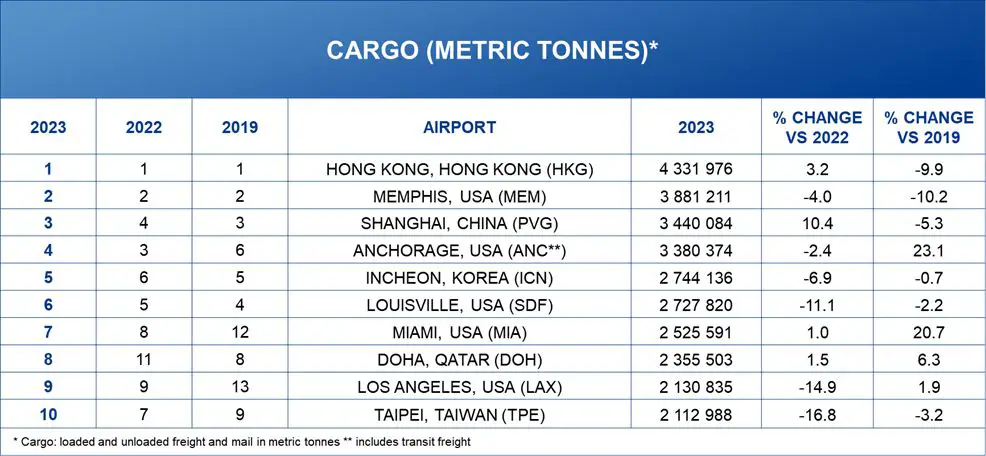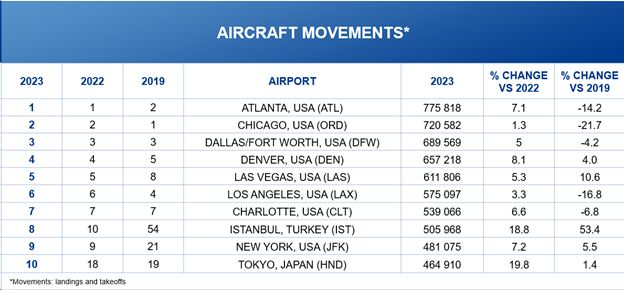As every year, Airports Council International today revealed the preliminary figures indicating which were the top 10 airports with the most passenger, aircraft, and cargo traffic around the world, which in this particular case, highlighted significant changes driven by the recovery of international air travel.
Last year, airports worldwide mobilized about 8.5 billion passengers, a figure that marks a recovery of 93.8% compared to pre-pandemic levels and a growth of 27.2% compared to 2022.
The domestic segment reached a recovery of 96.8% compared to 2019 (+20.2% vs 2022) while the international recovered by 90.4% (+36.5% vs 2022).
The Atlanta Harstfield-Jackson International Airport continues to undisputedly lead the ranking as the airport with the most passenger traffic worldwide, having mobilized 104,653,451 in 2023, a growth of 11.7% compared to 2022 (-5.3% vs 2019).
The second place is occupied, for the first time, by Dubai International Airport (DXB) with 86,994,365 passengers, 31.7% more than in 2022 (+0.7% vs 2019), a reflection of how the axis of global traffic continues to shift towards the Middle East.
Dallas/Fort Worth (DFW) ranked third with 81,755,538 passengers, 11.4% more than in 2022 and 8.9% more than in 2019.
Of the top 10 airports with the most traffic globally, five are in the United States, two in Europe, two in Asia-Pacific, and one in the Middle East.
In the international segment, the top three positions remained unchanged, leading the ranking Dubai (DXB) with 86,994,365 passengers. The second place was held by London-Heathrow (LHR) with 74,909,019 passengers, closing the podium Amsterdam-Schiphol (AMS) with 61,882,546 passengers.
In this Top 10, Madrid-Barajas appears in position number 10 with 43,799,968 passengers, 20.9% more than in 2022 but -2.5% compared to 2019. Movements in other airports caused Barajas to drop from position 7 in 2022 to 10 in 2023.
Cargo traffic decreased by 3.1% in 2023 vs 2022 (-4.6% vs 2019), reaching around 113 million metric tons.
Considering the Top 10 (which handles 26% of the total cargo), the drop was 3.5%, mainly attributed to ongoing geopolitical tensions and their impact on trade and global supply chains.
The Hong Kong airport maintained leadership in the cargo segment, followed by Memphis and Shanghai, the latter having climbed one position from 2022 to 2023.
Due to the strength of its domestic market, the Top 10 of the < strong>airports with the most aircraft movements continues to be dominated by the United States, with no changes until position 8, where Istanbul (IST) displaced New York-JFK, in addition to the entry of Tokyo-HND with an impressive jump from position 18 in 2022 to 10 in 2023 due to the reopening of international travel.
«Global air travel in 2023 was chiefly fuelled by the international segment, propelled by several factors. Among these were the anticipated benefits from China’s reopening and a growing inclination towards travel despite macroeconomic conditions,» said Luis Felipe de Oliveira, ACI World Director General.
«The rankings highlight the crucial role these transportation hubs play in global connectivity, commerce, and economic development. Airports continue to demonstrate their resilience and adaptability amidst the challenges posed by the ever-evolving landscape of global travel. ACI World remains dedicated to advocating for airports worldwide throughout pivotal stages of policy formulation and to advancing the pursuit of airport excellence,» he concluded.












